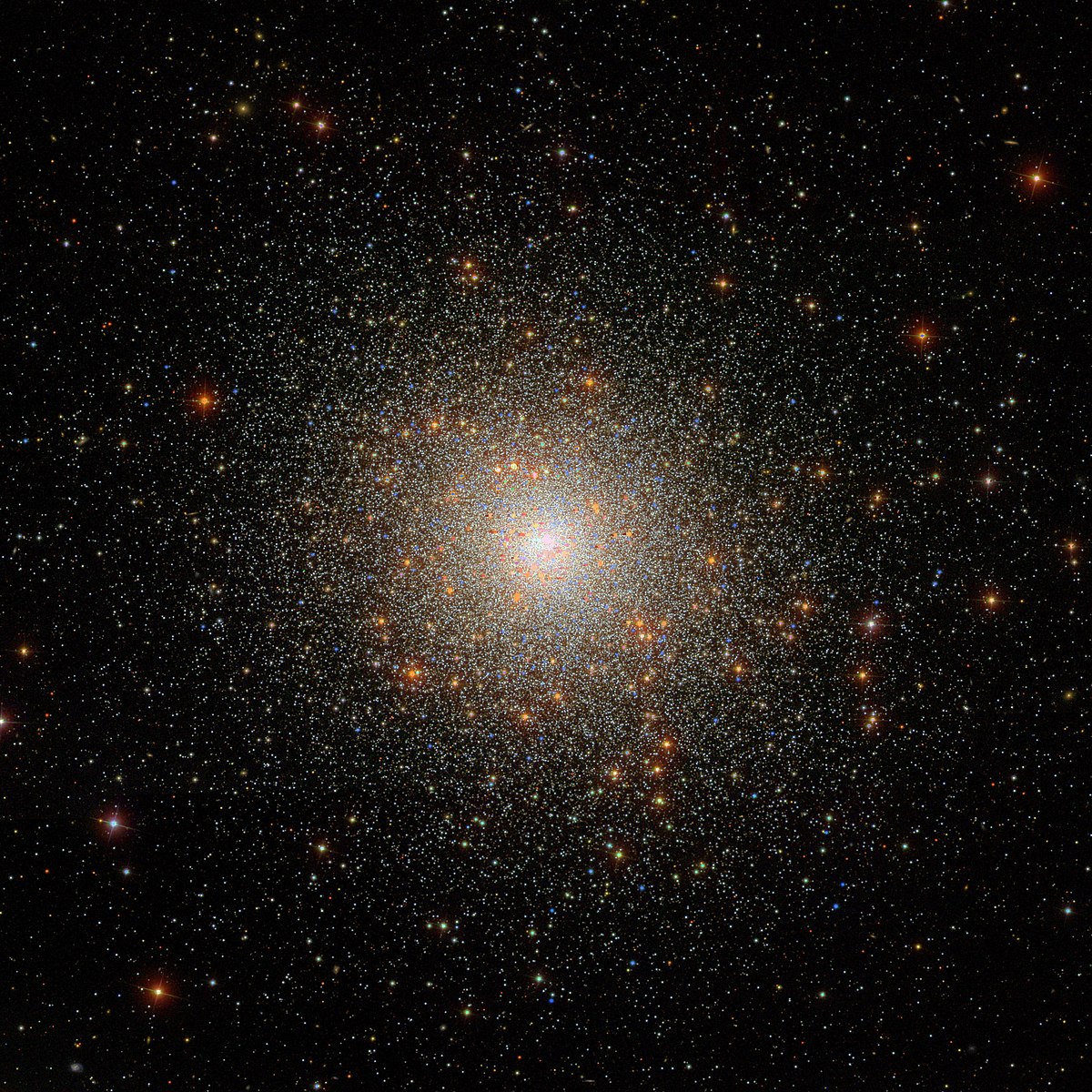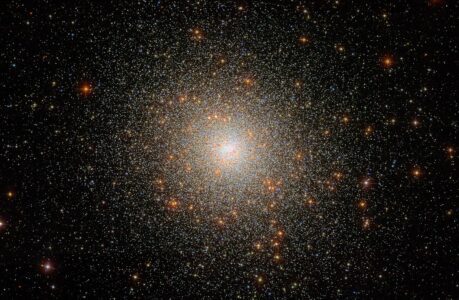Gaze upon the Celestial Marvel: Observing M5 from the Emerald Isle
The night sky has always captivated humanity, offering a canvas of stars, planets, and celestial wonders that stir our imagination and curiosity. Among these marvels, the Messier 5 (M5) globular cluster stands out as a spectacle that astronomers and stargazers yearn to observe. Ireland, with its rugged landscapes and relatively clear night skies, provides an excellent vantage point for observing this mesmerizing cosmic gem. In this celestial journey, we will uncover the allure of M5, delve into the optimal conditions for its observation from Ireland, and explore the astronomical insights it offers.
Messier 5 (M5) is a globular star cluster located in the constellation Serpens. A globular cluster is a spherical collection of stars that are tightly bound together by gravity. These clusters are among the oldest objects in the universe, and they can contain hundreds of thousands to even millions of stars.
M5, specifically, is one of the most prominent and largest globular clusters in our Milky Way galaxy. It’s located about 24,500 light-years away from Earth, making it relatively close in astronomical terms. The cluster spans a diameter of roughly 165 light-years.
Globular clusters like M5 are composed of very old stars, often more than 10 billion years old. These stars are thought to have formed early in the history of the universe, making them valuable objects of study for astronomers seeking to understand the early stages of stellar evolution and the conditions of the early universe.
M5 appears as a concentrated ball of stars when observed from Earth. The stars in the core of the cluster are densely packed, giving it a bright and luminous appearance. Despite its distance, M5 can be visible to the naked eye under dark skies, appearing as a faint fuzzy patch.
Astronomers study globular clusters like M5 to learn more about the formation and evolution of stars, as well as the dynamics of stellar interactions within densely packed environments. These clusters also provide insights into the history and composition of the Milky Way galaxy.
Unlocking the Secrets of M5
Messier 5, situated in the constellation Serpens, approximately 24,500 light-years away from Earth, is one of the oldest known globular clusters. Comprising hundreds of thousands of stars bound together by gravity, M5 presents a captivating dance of stellar bodies that has persisted for billions of years. Its age, estimated to be around 13 billion years, provides a window into the early stages of our universe’s evolution.
From a visual perspective, M5 appears as a concentrated ball of stars, with the brightest stars shining like diamonds against the velvet backdrop of space. Its luminosity is awe-inspiring, and its core, densely packed with stars, evokes a sense of wonder at the sheer vastness and complexity of the universe.
Ireland’s Astronomical Advantage
A Serene Escape from Light Pollution
Ireland’s relatively low population density, especially in its rural areas, grants it a significant advantage for observing celestial bodies like M5. Light pollution, caused by excessive artificial lighting, is a bane for astronomers as it obscures the clarity of the night sky. However, the remote locations in Ireland, far from the urban sprawl, provide a haven of darkness, allowing even faint objects like M5 to shine brilliantly.
Embracing the Dark Skies
Ireland’s commitment to preserving its natural landscapes extends to its efforts in curbing light pollution. Many regions in Ireland have earned the prestigious International Dark Sky Place designation. These areas enact strict measures to minimize light pollution, not only benefiting astronomers but also nurturing the ecosystem and allowing locals and visitors to reconnect with the awe-inspiring beauty of a star-studded sky.
Seasonal Considerations
Observing M5 from Ireland requires an understanding of its seasonal visibility. Summer, with its longer nights, offers an excellent opportunity to witness M5. During this season, the cluster climbs higher in the sky, reducing the atmospheric interference and enhancing its clarity.
The Art of Observing M5
Equipping Yourself for the Journey
Before embarking on your M5 observation journey, ensure you have the right tools. A telescope with moderate magnification capabilities and a wide field of view is ideal for capturing the entire splendor of M5 in one frame. Binoculars can also offer a breathtaking glimpse of the cluster’s brighter stars and its core’s brilliance.
Patience and Perseverance
Observing celestial wonders requires patience and a willingness to dedicate time to your pursuit. As you turn your gaze towards M5, allow your eyes to adjust to the darkness, revealing more stars and the subtle details of the cluster. The longer you observe, the more M5 unveils its intricacies, and the more profound your connection with the cosmos becomes.
Sketching the Unseen
While photography is a popular way to capture the night sky, sketching M5 can offer a unique perspective. Sketching encourages you to closely observe details that might be missed in a quick glance. Through sketching, you can document the positions of individual stars, the cluster’s core density, and your personal impressions of its beauty.
Astronomical Insights and Discoveries
Stellar Evolution and Dynamics
M5 provides astronomers with a fascinating opportunity to study the dynamics of a densely packed cluster. The interactions between stars within M5 are intricate, often leading to exchanges of mass and energy. By observing the changes in brightness and positions of stars over time, astronomers can glean insights into the life cycles of stars, their evolution, and the processes that shape their destinies.
Cosmic Time Capsule
As one of the oldest globular clusters, M5 acts as a time capsule, preserving information about the early universe. The chemical composition of its stars can reveal clues about the universe’s state when these stars were born. By extension, studying M5 aids in refining our understanding of the universe’s age and the conditions that prevailed during its formative years.
Exoplanet Exploration
The study of globular clusters like M5 has an unexpected connection to the search for exoplanets. Occasionally, a planet orbiting a star within the cluster can be detected through the minuscule dimming of starlight as the planet passes in front of its host star. These observations, though challenging, contribute to our knowledge of exoplanet populations and the prevalence of planetary systems in different environments.
Prepare for Your Celestial Odyssey
The night sky has an uncanny ability to evoke a sense of wonder and humility. Observing Messier 5 from Ireland transforms this experience into a celestial odyssey. With its remote landscapes, commitment to dark skies, and a dash of astronomical understanding, Ireland offers a front-row seat to the captivating dance of stars within M5. Equip yourself with a telescope, a patient spirit, and an inquisitive mind, and unlock the secrets of this ancient globular cluster. As you peer into the abyss, remember that each glimmering star in M5 contributes to a narrative stretching back billions of years—a narrative waiting for you to discover.
Embrace the Night: Explore Messier 5 from Ireland’s Dark Skies
Witness the cosmic splendor of Messier 5 from Ireland, where remote landscapes and dark skies converge to offer a celestial spectacle. Uncover the secrets of this ancient globular cluster, explore its intricate dynamics, and gaze upon stars that have graced the universe for billions of years. Join us on this astronomical journey and prepare to be awe-struck by the wonders of the cosmos.

